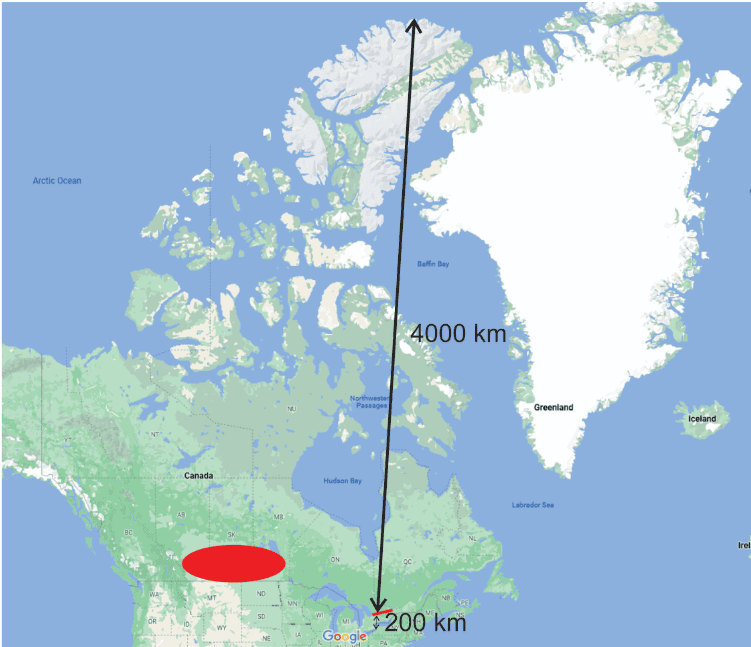In some circles Canada is portrayed as underpopulated because it covers a huge area and has low population density. Growth promoters suggest that a large proportion of Canada could be converted to farmland to feed both a much larger population and much of the world.
That may have seemed to be the case early last century when Ontario produced more wheat than the Prairies and Canada and the USA were termed “the breadbasket of the world”. But since then Canada has lost millions of acres of prime farmland to urban expansion.
Of course, if all of Canada land mass had strong agricultural potential, there would not really be a problem. But Canada is not Bordeaux or southern Ukraine. The reality is that less than 7% of the country has food growing potential and the highest quality RELIABLE farmland is in Southern Ontario which is being paved over at a rate of 300 acres per day.
And Canadians criticize Brazil for cutting down Amazon rainforests!
To put the “farm the north” fantasy into perspective, look at the map below. The red line drawn from Orillia, Ontario to Ottawa basically indicates the northern limits of eastern Canada where prime farmland stops. Yes, there are patches of good farmland north of the line but most of the northern ground is Canadian Shield, permafrost and muskeg.
The good land stops 200km north of the American border. The 4000 km of land north of the line has very little agricultural potential and any good soil requires huge energy and fertilizer inputs.

In 1500, the time of “contact” between Europeans and the New World, the population of Inuit in Canada’s north was approximately 2,000. This on a landmass of 1.4 million square kilometers. Europe, at the time, had a population of 90 million on an area 1/3 smaller. The reasons for the low density of population in Canada (the Amerindian population was in the range of 500,000 for the entire country) was the extreme nature of the climate requiring large resource inputs to survive and the very low density of those resources.
So, on a map, Canada looks as though it should support a large population but, on the ground, and when climate is taken into account, Canada can support a relatively small population if it hopes to remain a net food exporter. And food resilience is not something that is enhanced by paving over our best land and then depending on resource intensive marginal lands for our basic food needs.
In fact Canada’s landscape is harsher than that of many regions which also have very low population densities.

